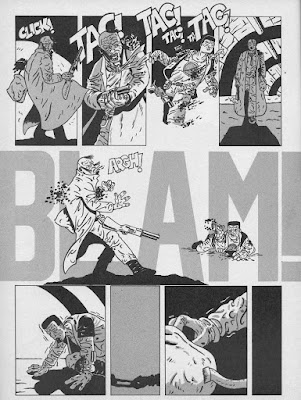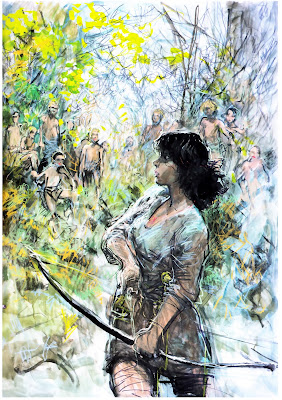Book Review: 'The Second Book of Robert E. Howard' edited by Glenn Lord
'The Second Book of Robert E. Howard' (368 pp.) was published in May, 1976 by Zebra / Kensington. Jeffrey Jones provided the cover art and various full-page, ink wash illustrations.
I remember buying this book from Gordon's Cigar store back in May 1976 and dutifully carrying it around with me over the ensuing 44 years. Upon re-reading, it's a decent enough 3 - Star title.
'The Second Book' is a hodgepodge of unpublished and published short stories and poems from Howard's archives. None of these (apparently) have been 'finished' or 'edited' by Glenn Lord or his cronies.
The collection starts off with a letter from Howard to Wilfred B. Talman, in which Howard provides an autobiographical summary of his younger days prior to taking up writing as an occupation.
The story 'Sword Woman' introduces Howard's character Agnes de la Fer, or 'Dark Agnes'. It's a well-written tale of a female Conan at large in what is likely 16th century France. Illustrating the staying power of Howard's creations, Marvel comics actually launched a Dark Agnes comic book in 2020 (which subsequently was cancelled due to the industry-wide disruption caused by the covid-19 epidemic).
There is a short Kull story ('The Striking of the Gong') and an enjoyable boxing tale, 'The Good Knight', which is laugh-out-loud funny. Two weird mystery stories set in the deep South, 'Black Canaan' and 'The House of Suspicion', are effective, but their use of Forbidden Words likely would make any contemporary efforts to re-publish them decidedly..... awkward.
'Kelly the Conjure-Man' represents an attempt at a nonfiction piece that ultimately was rejected by Texaco Star magazine. 'The Footfalls Within' is the now-classic Solomon Kane adventure, while 'Knife River Prodigal' demonstrates Howard's ability to take the humorous approach to characterization and plotting he deployed in his boxing stories, and successfully apply it to a western.
'Two Against Tyre' and 'For the Love of Barbara Allen' are historical adventures, while the concluding story in the collection, 'Guns of Khartum', is of interest mainly as a example of a 'spicy' adventure story that Howard turned to composing in the closing months of his life.
I give high marks to all of the poems that appear in the 'Second Book', although these, with their reliance on rhyming meter and eldritch topics, likely would not be regarded as worthy pieces by those of a Literary bent.
Jones's ink wash drawings are true to the material and of a high quality for a 'budget' publisher like Zebra Books (I would provide scans, but I risk breaking the book's spine).
Summing up, if you're a fan of Robert E. Howard or Jeffrey Jones, then picking up a copy of 'The Second Book of Robert E. Howard' is worth your while.

















































